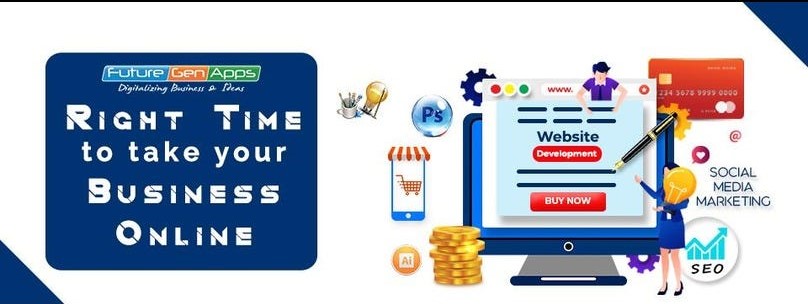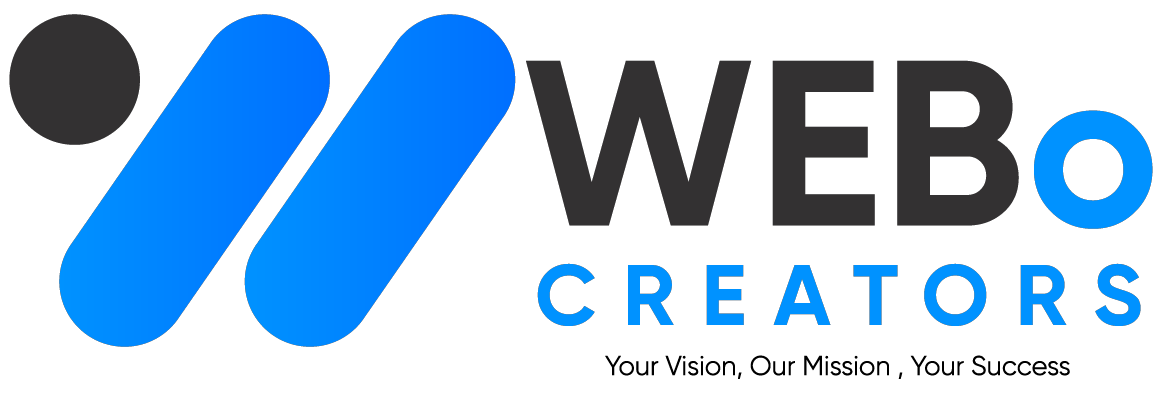
How to Build a Website: Your Comprehensive Guide for 2024
Crafting Your Digital Presence: An In-Depth Website Building Tutorial
In the dynamic landscape of 2024, creating a website that stands out and ranks well on Google is a crucial step in establishing your online presence. This comprehensive guide will walk you through the process, ensuring your website is not only SEO-friendly but also user-friendly, providing value to your audience.
-
Understanding the Basics of Website Building
Before diving into the technicalities, let's lay a solid foundation by understanding the fundamental aspects of website building. From domain registration to choosing the right hosting provider, we'll cover the essentials that set the stage for your website.
-
Navigating the SEO Maze: A 2024 Approach
In the ever-evolving world of SEO, staying current is paramount. Uncover the latest SEO strategies and techniques that will propel your website to the top of search engine results. Learn how to seamlessly integrate keywords, optimize meta tags, and enhance overall SEO performance.
-
Responsive Design for a Seamless User Experience
In the age of mobile devices, a responsive design is non-negotiable. Dive into the principles of responsive web design, ensuring your website looks and functions flawlessly across various devices. This not only enhances user experience but also contributes to improved search engine rankings.
-
Content is King: Creating Engaging and Relevant Material
Quality content is the backbone of any successful website. Learn the art of crafting compelling, relevant, and shareable content that not only attracts visitors but also keeps them engaged. Explore content creation strategies that align with both user preferences and search engine algorithms.
-
Niche Targeting and Keyword Research
To stand out in the vast online space, niche targeting is essential. Conduct thorough keyword research to identify the phrases and terms your audience is searching for. Tailor your content to address these queries, enhancing your website's visibility and attracting a targeted audience.
-
The Power of Visual Appeal: Designing a Visually Stunning Website
First impressions matter, and your website's design plays a crucial role in capturing visitors' attention. Explore design principles, color schemes, and user interface tips to create a visually appealing website that reflects your brand identity.
-
Speed Optimization for Peak Performance
In the fast-paced digital era, users expect websites to load quickly. Delve into speed optimization techniques, from image compression to efficient coding, ensuring your website not only meets user expectations but also satisfies search engine ranking criteria.
-
Future-Proofing Your Website: Staying Ahead in 2024 and Beyond
Anticipate the future by exploring emerging trends and technologies in web development. From AI integration to voice search optimization, stay ahead of the curve to ensure your website remains relevant and competitive.
Building a Website with WordPress: A Quick Guide on MERN Stack Integration
Introduction
Creating a website on WordPress integrated with the MERN (MongoDB, Express.js, React, Node.js) stack is a powerful combination that offers flexibility and scalability. In this guide, we'll walk you through the steps and provide insights on how long it might take to build your website.
Step 1: Set Up Your Environment
Before diving into the MERN stack, ensure you have a WordPress environment ready. Install WordPress on your hosting platform, configure your database, and set up the necessary plugins for a smooth integration.
Step 2: MERN Stack Integration
-
a. MongoDB
Start by setting up a MongoDB database. Install and configure MongoDB to store your website's data efficiently. Connect WordPress to MongoDB using plugins like "MongoDB Atlas" for seamless integration.
-
b. Express.js
Integrate Express.js to handle server-side operations. Configure routes and middleware to ensure smooth communication between your WordPress site and the MERN stack.
-
c. React
Leverage React for building a dynamic and interactive user interface. Create React components that fetch and display data from your WordPress backend.
-
d. Node.js
Use Node.js as the backend runtime environment. Set up server-side logic to handle requests, manage data, and communicate with the WordPress API.
Step 3: Theme Development
Customize your WordPress theme to align with the MERN stack. Develop a responsive and visually appealing design using HTML, CSS, and JavaScript. Ensure compatibility with React components.
Step 4: Plugin Integration
Explore and integrate plugins that enhance the functionality of your website. Ensure these plugins are compatible with both WordPress and the MERN stack.
Step 5: Testing
Thoroughly test your website for functionality, responsiveness, and compatibility across browsers. Identify and fix any issues that may arise during the testing phase.
Step 6: Deployment
Once testing is complete, deploy your WordPress site with the integrated MERN stack. Choose a hosting provider that supports both technologies for optimal performance.
Time Estimate
The time required to build a WordPress website with MERN stack integration depends on factors like complexity, customization, and your familiarity with the technologies. For an experienced developer, the process can take anywhere from a few weeks to a couple of months.
Frequently Asked Questions (FAQs) - How to Build a Website: Your Comprehensive Guide for 2024
Q1: Why is building a website important in 2024?
A1: In 2024, a website is crucial for establishing an online presence. It not only enhances visibility but also enables businesses and individuals to reach a global audience, share information, and showcase products or services.
Q2: Do I need coding skills to build a website?
A2: While coding skills can be beneficial, many user-friendly platforms and content management systems (CMS) allow you to build a website without extensive coding knowledge. These platforms often provide drag-and-drop features for easy customization.
Q3: How do I choose a domain name for my website?
A3: Select a domain name that is relevant to your content, easy to remember, and reflects your brand or purpose. Ensure it is unique, easy to spell, and preferably has a .com extension for broader recognition.
Q4: What is SEO, and why is it important for my website?
A4: SEO (Search Engine Optimization) is the practice of optimizing your website to rank higher in search engine results. It is crucial for visibility and attracting organic traffic. Effective SEO strategies include keyword optimization, quality content, and a user-friendly website structure.
Q5: How long does it take to build a website?
A5: The time to build a website varies based on factors such as complexity, features, and your familiarity with the tools. With modern website builders, you can create a basic website in a few hours, while more complex sites may take weeks to months.
Q6: Can I update my website's content after it's live?
A6: Yes, most websites use content management systems (CMS) that allow easy content updates. Platforms like WordPress, Wix, or Squarespace provide intuitive interfaces for adding, modifying, or removing content.
Q7: What is responsive design, and why is it important?
A7: Responsive design ensures that your website looks and functions well on various devices, including smartphones and tablets. It's crucial for providing a positive user experience and is a factor considered by search engines for ranking.
Q8: How much does it cost to build a website?
A8: The cost of building a website depends on factors such as hosting, domain registration, design complexity, and additional features. Basic websites can be affordable, while complex e-commerce or custom-built sites may have higher costs.
Q9: Can I integrate social media with my website?
A9: Yes, most websites allow integration with social media platforms. You can include social media buttons, shareable content, or even embed feeds to enhance engagement and connect with your audience.
Q10: Is building a website a one-time process, or does it require ongoing maintenance?
A10: While the initial development is a significant phase, websites require ongoing maintenance. Regular updates, security checks, and content refreshment are essential to ensure optimal performance and relevance.
Frequently Asked Questions (FAQs) - Building a Website with WordPress and MERN Stack
Q1: What is the MERN stack?
A1: The MERN stack consists of MongoDB (database), Express.js (backend framework), React (frontend library), and Node.js (JavaScript runtime). It's a powerful combination for building dynamic and scalable web applications.
Q2: Why integrate WordPress with the MERN stack?
A2: Integrating WordPress with the MERN stack allows you to leverage the content management capabilities of WordPress along with the interactive and real-time features provided by the MERN stack, offering a comprehensive solution for web development.
Q3: How do I set up a WordPress environment?
A3: To set up a WordPress environment, install WordPress on your hosting platform, configure your database, and set up essential plugins for seamless integration with the MERN stack.
Q4: What role does MongoDB play in the integration?
A4: MongoDB serves as the database for storing website data efficiently. Plugins like "MongoDB Atlas" facilitate the connection between WordPress and MongoDB.
Q5: How can I ensure responsive design in a MERN-WordPress website?
A5: Develop a responsive design using HTML, CSS, and JavaScript. Ensure compatibility with React components to provide a seamless user experience across various devices.
Q6: Can I use existing WordPress plugins with the integrated MERN stack?
A6: Yes, you can explore and integrate plugins that enhance your website's functionality. Ensure compatibility with both WordPress and the MERN stack for optimal performance.
Q7: How long does it take to build a WordPress website with MERN stack integration?
A7: The time required depends on factors like complexity, customization, and your familiarity with the technologies. For experienced developers, the process can take a few weeks to a couple of months.
Q8: What are the key steps in MERN-WordPress website development?
A8: The key steps include setting up the environment, integrating the MERN stack components, theme development, plugin integration, thorough testing, and deployment on a hosting provider supporting both technologies.
Q9: Can I future-proof my MERN-WordPress website?
A9: Anticipate the future by staying updated on emerging trends and technologies in web development. This ensures your website remains relevant and competitive in the ever-evolving digital landscape.
Q10: How do I troubleshoot issues during testing?
A10: Identify and fix issues by thoroughly testing your website for functionality, responsiveness, and compatibility across browsers. Address any issues that may arise during the testing phase for a smooth user experience.
Feel free to reach out if you have more questions or need further clarification!
Conclusion
Integrating the MERN stack with WordPress opens up a world of possibilities for building feature-rich and dynamic websites. With careful planning, efficient execution, and thorough testing, you can create a seamless fusion of the two technologies, offering both the content management capabilities of WordPress and the interactive, real-time features of the MERN stack.




